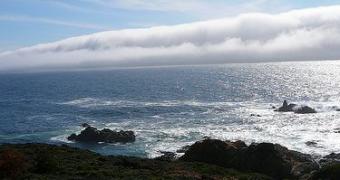Understanding the forming and the behavior of large amplitude waves could help scientists build efficient tsunami warning systems.
Adrian Constantin, Professor at the Faculty of Mathematics at the University of Vienna, is trying to prove scientifically, what every seaman knows: the shape of surface waves gives an idea of the strength of underlying water currents.
The four year project called “The flow beneath a surface water wave” funded by the Vienna Science and Technology Fund (WWTF) aims at understanding the effect of currents on ocean waves.
Professor Constantin was determined by the catastrophic tsunami in 2004, that made over 230,000 victims and whose aspects have not all been cleared out.
The main question remaining is how come before the tsunami, the sea in Thailand retreated while in India there was no such warning.
Constantin says that “Satellite measurements show that in the direction of Thailand there was a first wave of depression, while in India the opposite direction was first confronted with a wave of elevation.”
Knowing the shape that tsunami waves have, earlier in time, could help predict some of its characteristics as it gets close to the shore.
“Tsunami waves are very dangerous at mildly sloped beaches, whereas in steep regions reflection occurs, and the speed of the tsunami wave is proportional to the square root of the water depth,” Constantin says.
Being an occasional diver, he became very interested in the pressure deep down in the sea, and he believes that it can provide valuable information about incoming waves.
“As the wave crest approaches overhead one notices an increase of pressure, while a decrease in pressure signals the arrival of a wave trough,” he explains.
The professor is trying to create a mathematical model for wave-current interaction, thus making the first step toward a tsunami warning system, that could help saves thousands of lives.
Constantin is convinced that the initial shape of the wave triggers the behavior of tsunami waves closing in on the shore.
Also, the number of waves that hit a particular location has its importance, as mathematics prove that it is related to the wave profile at its source.
“The number of tsunami waves close to the shore is never greater than the initial number of waves,” the mathematician explains.
The problem is that the amplitude of these waves can only be predicted approximately, since this aspect is closely related to the often very complicated topography of the sea bed.
Adrian Constantin in working with the Franzius Institute of Hydraulics, Waterways and Coastal Engineering at the Leibniz University of Hannover to discover whether the mathematical conclusions fit with field data.
And as the longest water wave tank in the world is located in Hannover, Constantin and his team can use it for experiments.

 14 DAY TRIAL //
14 DAY TRIAL //